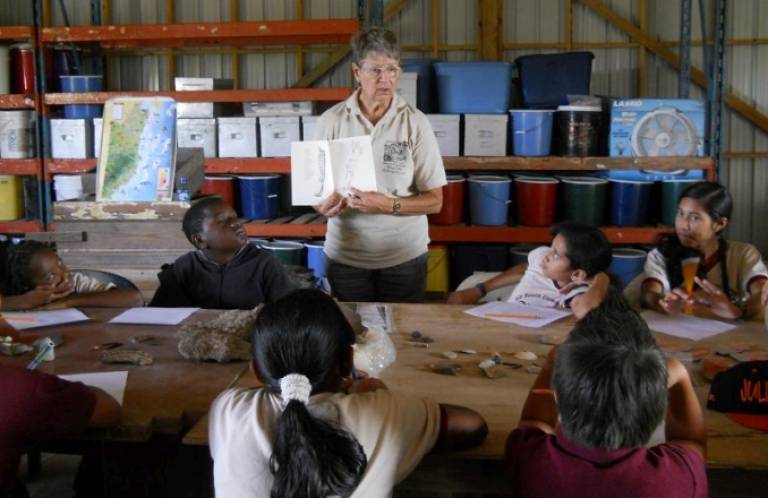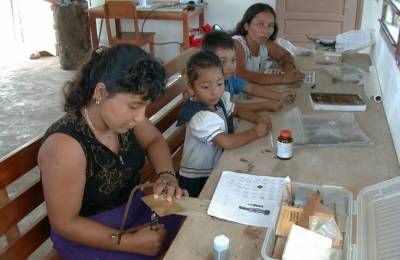Exploring Belize's Maya heritage

14 December 2014
A long-term archaeological excavation of the important Maya site of Lamanai, Belize, has had significant impacts on tourism and the local economy, benefiting 212,800 visitors during 2008-2013. A subsequent invitation to Marco Gonzalez helped prevent its destruction by developers and has created a new recognition of local Maya heritage.
Professor Elizabeth Graham (UCL Institute of Archaeology) is leading two long-term archaeological field projects at Maya sites in Belize: at Lamanai, where she worked for over 15 years, and at the Marco Gonzalez site on Ambergris Caye. Her research focuses on periods of transition in Maya history, including the early Maya florescence, and the decline following the Spanish and British conquests. At both sites, excavations helped dispel the notion of widespread collapse, and revealed a number of connected communities that resisted collapse and continued to thrive.
The Lamanai Archaeological Project is an example of long-term fieldwork embedded in a community offering deep and sustained benefits. Over the years it helped to develop the site for visitors - including conserving key Maya buildings and developing a visitor centre - and thus provided a vital boost, through tourism, to the local economy. Lamanai is amongst the most visited Maya sites in Belize, and these improvements are a key attraction for the over 212,800 people who visited the site in 2008-2013. By contrast, in the equivalent time period before the tourism development project began (1995-2000), the site was visited by only 93,200 visitors. This was accompanied by training for the Orange Walk Tour Guide Association and community development, including training in jewellery making and the establishment of an artisan centre in the nearby village of Indian Church.

On Ambergris Caye, one of the most important diving destinations in Belize, Maya heritage forms a minor part of local identity. Professor Graham was invited to Marco Gonzalez, an important site on the caye, when it was threatened by new development. The Belize Institute of Archaeology used her research to argue for the site's preservation, and in 2010, it became the first island-based Maya archaeological reserve in Belize.
Professor Graham's subsequent excavations at Marco Gonzalez are helping to increase awareness of the richness of this heritage amongst San Pedranos, living in the island's main town. This has contributed to its development as a heritage site. The research project provides expertise, objects and arranges archaeology days with the Marco Gonzalez Maya Site Ambergris Caye (MGMSAC) preservation group, which also uses research findings to fundraise to improve signage and develop guide narratives. A 433-metre footbridge through delicate mangrove swamps built for the 2010 field school has enabled access to tour groups, and the number of visitors more than doubled from the first year of access (2011) to its second.
Partly thanks to this project, San Pedranos have begun to support this long-ignored part of their heritage, with regular coverage in the local press, donations financially and in-kind, and support for road projects to improve access. From 2012, San Pedro schools joined the Ambassadors of the Past programme run by the project, which brings ethnic Maya to the caye to discuss the place of Marco Gonzalez in the Maya heritage of Belize.
If we practice archaeology, we must engage with the consequences of its impact, which argues for long-term commitment to the areas where we work. - Professor Elizabeth Graham
Funders included the Leverhulme Trust, British Academy, Andante Travel, the British High Commission in Belize, and the Inter-American Development Bank.
Related links
Images
- A school trip to Marco Gonzalez on Ambergris Caye.
- Crafts training and marketing at Lamanai.
 Close
Close

